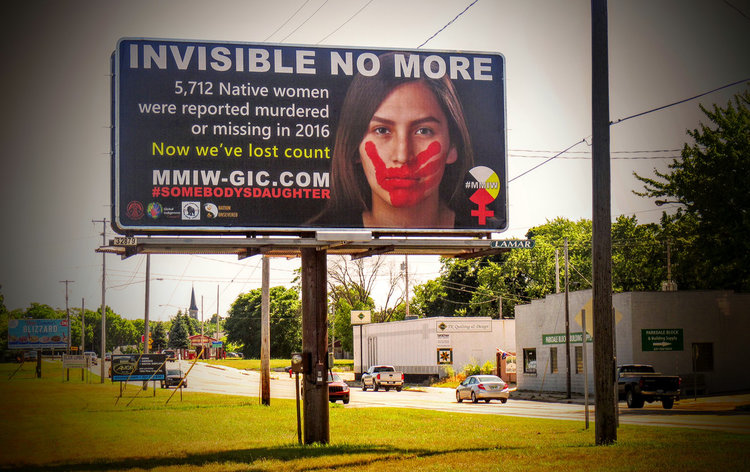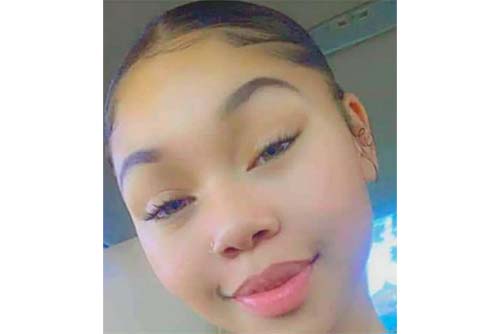
- Details
- By Levi Rickert
Opinion. The news that Jalajhia Finklea’s body was found in a field along a Florida highway came during Thanksgiving week. The young pregnant Mashpee Wampanoag tribal citizen went missing on October 20, 2020, on the night before her 18th birthday. Her remains were discovered over a month later 1,350 miles from her home.
The particulars of this tragedy to this young Indigenous woman may never be fully known. The man who was suspected of kidnapping her from her hometown in Massachusetts and taking her to Florida was killed during a shootout with law enforcement in a McDonald’s parking lot three weeks before Finklea’s body was discovered.
Native News Online reported on the discovery of her body on the evening after Thanksgiving. By now, the story of this young woman’s death has already reverberated throughout Indian Country.

Sadly, Finklea’s abduction and subsequent tragic death is one of thousands of Indigenous women and children who go missing in the United States annually. During the past several years, there has been a stunning and tragic rise in the number of missing and murdered Indigenous women in the United States and Canada. The problem of missing and murdered Indigenous women is so profound that the crisis is now referred to as an epidemic.
Experts argue that the shameful and all-too-common practice of sexual abuse of Indigenous women and girls is not a new phenomenon. The total disrespect of and violence against Indigenous women and children dates back to Columbus, as his vile men raped and even killed Native women. Some were taken by Columbus and his men to Europe. Once there, the Indigenous females were sex trafficked.
The disrespect of Indigenous women has continued throughout American history.
In 1976, a study by the U.S. General Accounting Office (GAO) found that 4 of the 12 Indian Health Service regions sterilized at least 3,406 American Indian women without their permission during the 1970s.
In 2017, the National Crimes Information Center reported 10,642 missing Native Americans. Of that total, 5,172 were Indigenous women and girls. The U.S. Department of Justice only logged 116 cases in its database.
Not to take the need to protect Indigenous women and children, but to enlighten the general public to the serious problem faced in Indian County, Indigenous men have been included in some studies, such as the National Institute of Justice’s “Violence Against American Indian and Alaska Native Women and Men” 2016 report that said:
“Results show that more than four in five American Indian and Alaska Native women (84.3 percent) have experienced violence in their lifetime. This includes 56.1 percent who have experienced sexual violence, 55.5 percent who have experienced physical violence by an intimate partner, 48.8 percent who have experienced stalking, and 66.4 percent who have experienced psychological aggression by an intimate partner. Overall, more than 1.5 million American Indian and Alaska Native women have experienced violence in their lifetime.”
Much work needs to be done to correct these staggering statistics. Across Indian Country, American Indian tribes, elected tribal officials, survivors, advocates and tribal coalitions have for years worked hard to bring the epidemic to the attention of local, state and federal officials.
Currently, there is a Presidential Task Force on Missing and Murdered American Indians and Alaska Natives, also known as Operation Lady Justice, working on the issue. In its first full-year of operation, it has spent its time holding tribal consultations and establishing cold-case offices in various regions within Indian Country.
Last month, the U.S. Department of Health and Human Services’ Administration for Children and Families released a 66-page “Missing and Murdered Native Americans: A Public Health Framework for Action” that creates a pathway for some critical HHS human services programs to work with tribal communities and its partners to strengthen protection for Indigenous people and to counter the impacts of violence.
The MMIWG crisis has the attention of the incoming Biden administration. The Biden-Harris Plan for Tribal Nations released during the presidential campaign commits “to break the cycle of victimization and promote accountability, Biden will partner with tribal leaders and tribal women’s advocates to ensure tribal lands are safe and focus on ending violence against Native women and children and ending the epidemic of missing and murdered Indigenous women and girls.”
All of these efforts are steps to stop the long history of violence against Indigenous women.
Within our tribal communities we need to be prayerful and diligent to keep our Indigenous sisters – family and friends – safe because they are more than sad statistics.
As in the case of Jalajhia Finklea, her death is a loss for her family and tribal community.
More Stories Like This
The Lie We Keep Telling About Wounded KneeAnother Weapon of Mass Destruction
Colorado cannot heal until it confronts Sand Creek honestly
Native American Mothers Deserve to Live
Technology Rooted in Tradition is Strengthening Cherokee Nation
Help us defend tribal sovereignty.
At Native News Online, our mission is rooted in telling the stories that strengthen sovereignty and uplift Indigenous voices — not just at year’s end, but every single day.
Because of your generosity last year, we were able to keep our reporters on the ground in tribal communities, at national gatherings and in the halls of Congress — covering the issues that matter most to Indian Country: sovereignty, culture, education, health and economic opportunity.
That support sustained us through a tough year in 2025. Now, as we look to the year ahead, we need your help right now to ensure warrior journalism remains strong — reporting that defends tribal sovereignty, amplifies Native truth, and holds power accountable.
 The stakes couldn't be higher. Your support keeps Native voices heard, Native stories told and Native sovereignty defended.
The stakes couldn't be higher. Your support keeps Native voices heard, Native stories told and Native sovereignty defended.
Stand with Warrior Journalism today.
Levi Rickert (Potawatomi), Editor & Publisher

